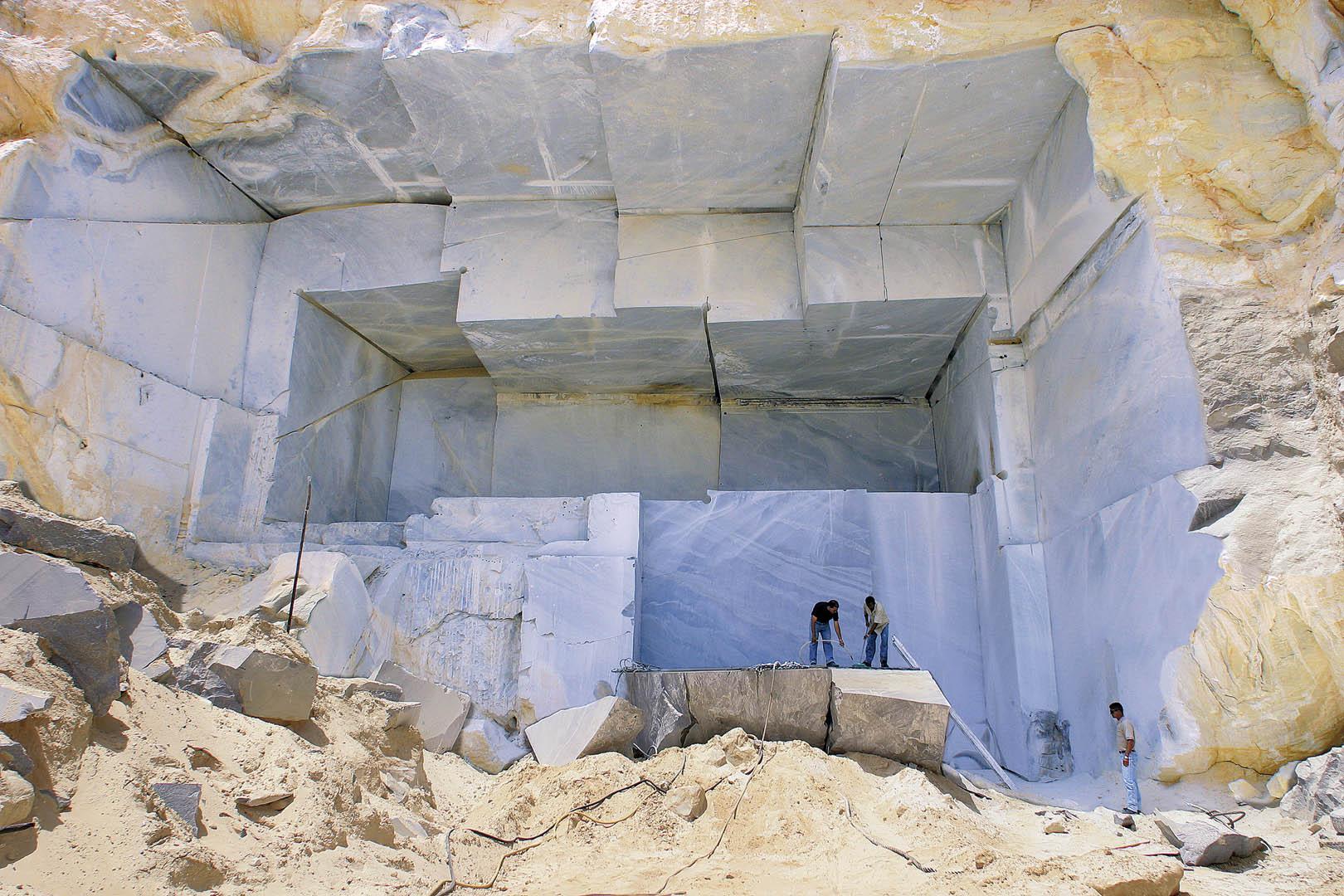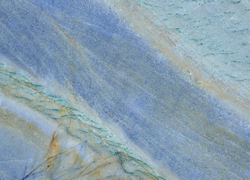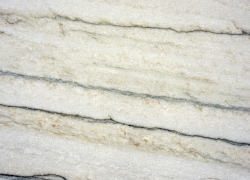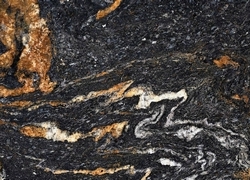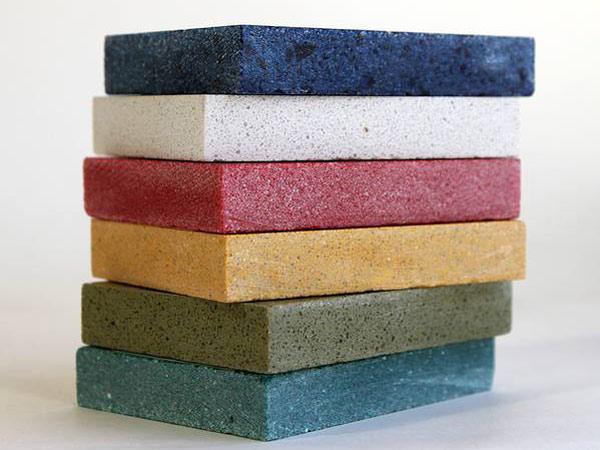Quartzite products are often confused with synthetic quartz products, after all they have similar names. Through which criteria one can distinguish quartz from quartzite?
Even though quartz and quartzite appear very similar, they are completely different materials: quartz is a synthetic resin produced by humans (through a process where quartz powder, synthetic resins, and colour pigments are combined), whereas quartzite is a metamorphic rock formed by chemical and physical processes over millions of years, where the geographical location, the proportion of minerals deposited over time, and the geological events from distant geological eras (such as earthquakes, eruptions, settling and rising of the earth's crust) have defined colours and patterns.
At high temperatures and immense pressure, quartzite derives from the transformation of sedimentary rocks, which are often calcareous. This geological process gives quartzite a crystalline structure with many unique colours and veins. In contrast to quartz composites, quartzite reflects the geological complexity of its origin in its aesthetic diversity and high resistance.
Quartz and quartzite have two common properties, both products have a very high quartz content and are often applicated in the same areas. In our opinion, everything speaks rather in favour of quartzite.
In terms of material hardness, quartzite outperforms quartz composite due to its geological nature, as quartzite ensures uncompromising durability under daily wear and tear, while providing incredible natural beauty and therefore it is well suited as floor covering, kitchen countertop or bathroom accessory. Even though quartz composite is durable, it may require special attention to avoid damage from sharp or heavy objects, when falling on the surface.
To put it simply, quartzite is a natural product and every single material in this category shows uniqueness and natural inclusions due to the different minerals, the places of origin and the geological Earth Age.
Quartz is produced artificially, trying to imitate quartzite and ensure uniformity for large areas.
The physical-chemical differences between Quartz und Quartzite
We are often asked, what are the chemical-physical differences between quartz and quartzite.
The significant difference lies in the origin, as quartzite was formed millions of years ago; in addition, both materials have different production times and methods.
Quartz slabs are created by mixing quartz, colorants, and resin in a short industrial manufacturing process in the laboratory.
Quartzite, on the other hand, is a very hard metamorphic natural stone that is formed from sandstone and consists mainly of quartz (mineral). To get an idea of how quartzite is formed, think of the production of glass.
Take sand and heat it at very high temperatures until it melts into a semi-liquid mass, then expose the mass to high pressure. The movements of the earth's crust as well as the different minerals give this natural stone diverse and unique colours and stripes. Now set an imaginary alarm clock for a few hundred thousand years and give the mass time to cool down... et voilà, you get a natural quartzite.
There are many types of quartzite, as the composition and coloration of quartzite depend on the mining site, that’s why the colour palette ranges from transparent white to beige, from yellow to brown, from pink to red, and from blue green to black. Here are some quartzite types:
Quartzite is a natural stone with high abrasion resistance, it is generally very resistant to environmental pollution and acids, as well as to temperature changes and can therefore be used both indoors and outdoors.
The synthetically produced quartz, on the other hand, is only used indoors, as it is not particularly scratch and heat resistant.
The surface finishing of quartzite is various: e.g. split or honed. A polished surface provides quartzite with a special shine, but a satined surface also lights the natural stone up.
If a specific surface finishing is applicated to coloured quartzites with veins, a fascinating, spectacular, and very elegant scenography can be obtained.
Quartz, on the other hand, offers a wide range of colours, because any colour can be used in the production process. Therefore, artificial, and unnatural colours can also be created on request.
So far, the wide range of naturally obtained quartzites, which are characterized by a large variety of colours, has been able to weather the demand for coloured quartz (e.g. Fusion Wow Red or Fusion Blue Caravaggio, Colorado Quartzite, Green da Vinci Quartzite, Emerald Green Quartzite, Meridien Quartzite, Lumix, and many others...).
When to use quartz indoors and outdoors?
Quartz is mainly used for interior decoration.
Indoors, where durability and style are required, quartz is particularly suitable as:
- kitchen countertop
- vanity top
Thanks to its wide range of colours and surface finishings, quartz adapts to all furnishing and decoration styles, transforming any setting into a timeless elegant scene.
On the other hand, quartzite, thanks to its beauty and durability, is suitable for various indoor and outdoor applications.
Indoors, it adds a touch of elegance and is ideal as:
- floor covering
- kitchen countertop
- vanity top
- wall cladding.
Due to its weather resistance, quartzite is also perfect for outdoor use as:
- floor covering,
- pavement in garden areas,
- wall cladding,
- stair covering,
- pavement,
- sustaining wall.
Thanks to the variety of colours and the different veins, quartzites adapt to any style and create a characteristic setting, combining aesthetics and functionality in a harmonious way.
In conclusion, the choice between quartz and quartzite is subject to the specific needs of each project, as well as it depends on one’s personal aesthetic taste and preference for a synthetic material or rather for a natural stone that embodies the earth’s beauty.

